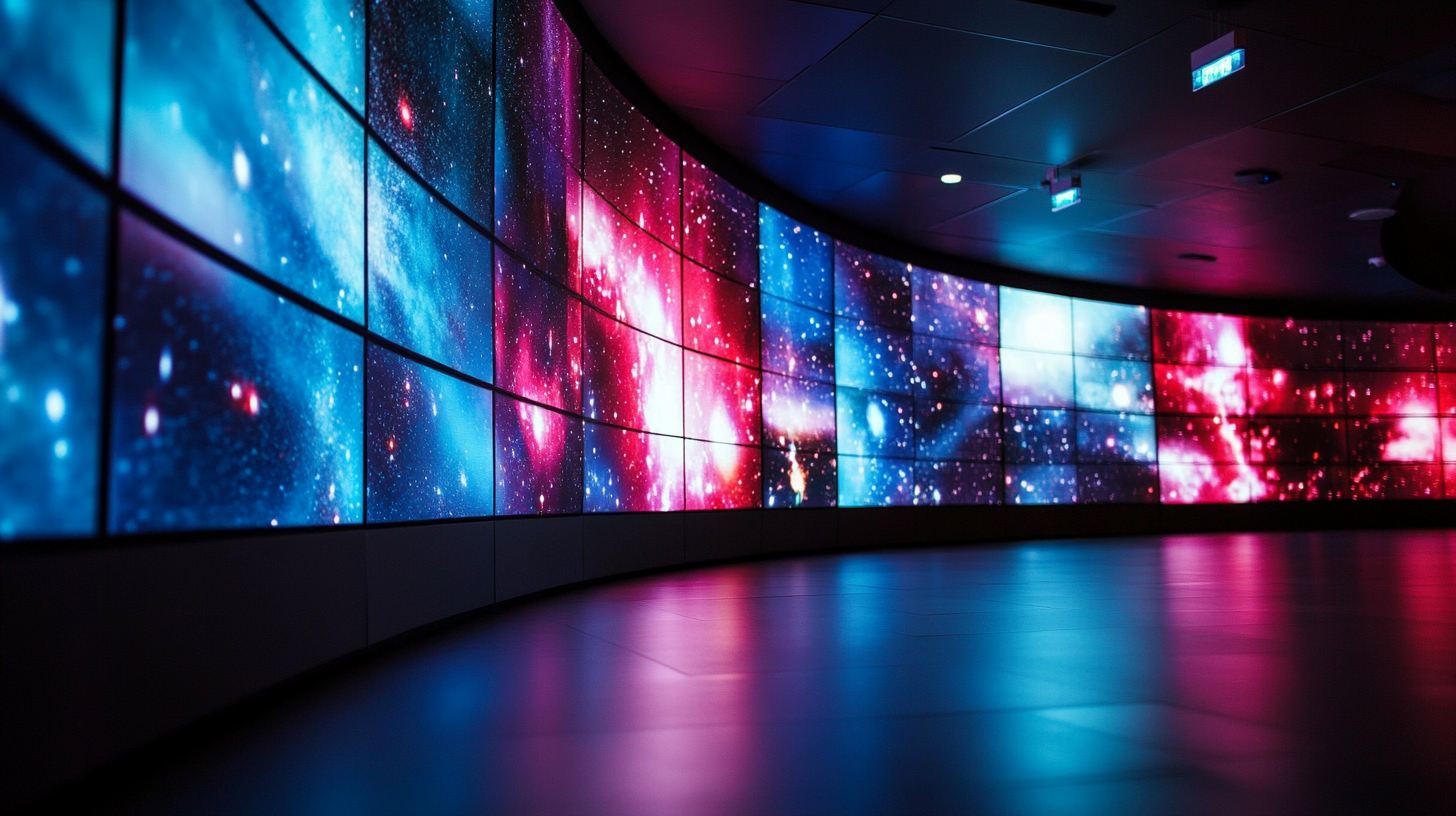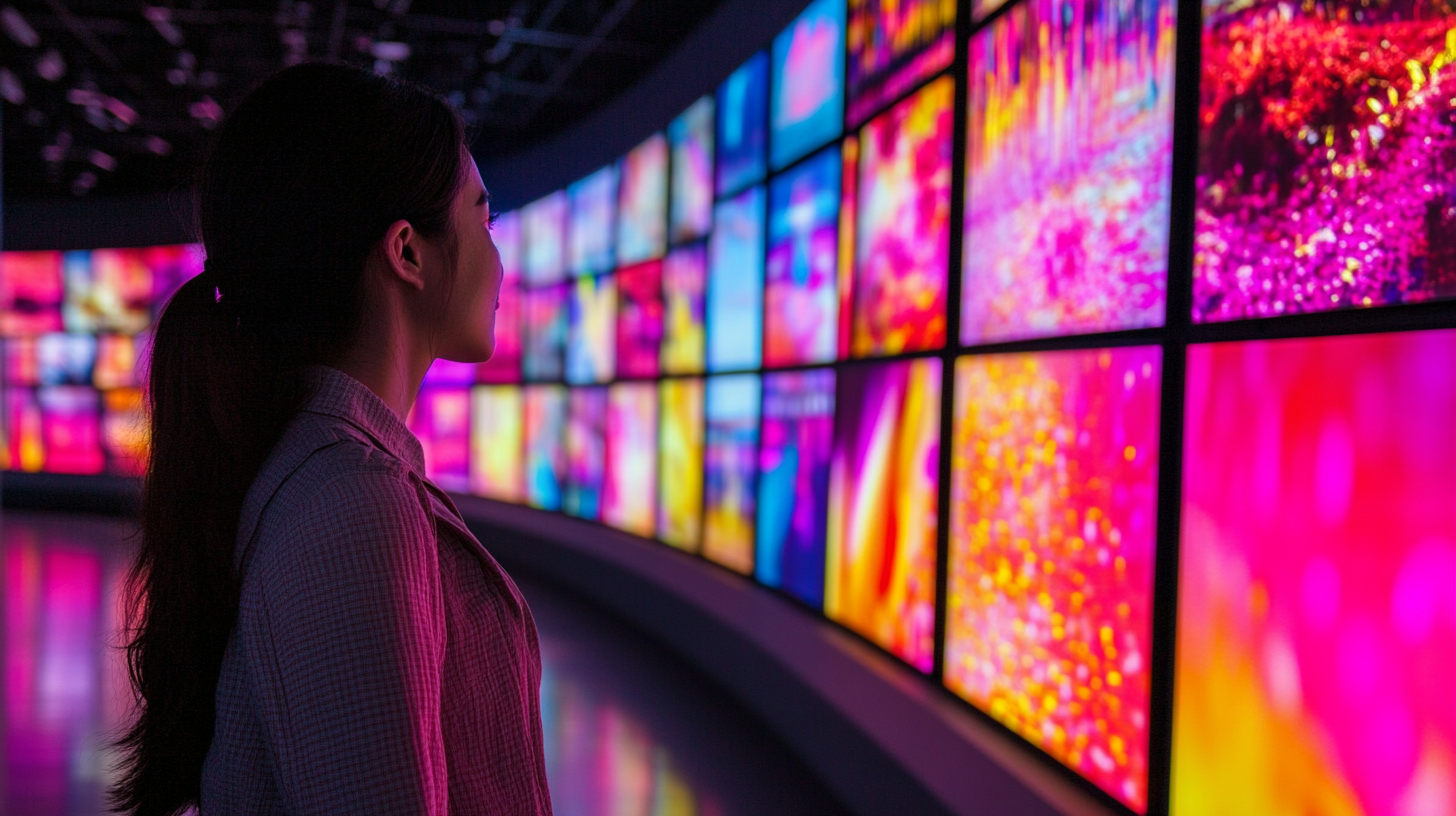Understanding the Difference Between LED and LCD Displays
At first glance, LED and LCD displays might seem similar, but they work in different ways:
- LCDs rely on a backlight (usually LED or fluorescent) that shines through liquid crystal layers to create an image.
- LED displays use individual LEDs to generate light and color, eliminating the need for a separate backlight.
Although many LCDs today use LED backlighting, they are still fundamentally different from true LED displays, such as OLED (Organic LED) or direct-view LED panels used in digital signage.

Why LED Displays Are More Energy-Efficient
1. No Need for a Constant Backlight
One of the biggest reasons LED displays are more efficient than LCDs is that they do not require a continuous backlight. In an LCD, the backlight is always on, even when displaying dark colors or black images. This leads to wasted energy, as much of the light is blocked rather than used.
LED displays, on the other hand, only light up the necessary pixels, meaning they consume power only where it’s needed. This results in significant energy savings, especially for darker content.
2. More Efficient Light Emission
LEDs are known for their high luminous efficacy, meaning they convert more electricity into visible light rather than heat. Traditional LCDs, especially older models with CCFL (Cold Cathode Fluorescent Lamp) backlighting, waste a significant amount of energy as heat rather than usable light.
By contrast, modern LED displays use self-emissive diodes or local dimming LED zones, which require less power while producing brighter and more vibrant images.
3. Better Contrast and Dynamic Power Control
With LCDs, the backlight is uniform, meaning even dark areas of the screen still consume power. In contrast, LED displays, especially OLED and MicroLED screens, can turn off individual pixels completely. This allows for true black levels and power savings in darker scenes.
For example:
- A movie with dark scenes on an LCD will still consume nearly the same power as a bright scene.
- On an LED display, dark scenes use significantly less power because fewer LEDs are active.
4. Adaptive Brightness and Dimming
Many LED displays feature automatic brightness control, adjusting the screen’s brightness based on ambient lighting. This reduces energy consumption in low-light environments, unlike LCDs, which often operate at a fixed backlight intensity.
Additionally, technologies like local dimming and PWM (Pulse Width Modulation) dimming further optimize power usage by reducing brightness in darker areas of the screen.
5. Higher Lifespan and Efficiency Over Time
LEDs are designed to last significantly longer than fluorescent backlights used in older LCDs. While LCD backlights degrade over time and require more power to maintain brightness, LEDs retain their efficiency for tens of thousands of hours with minimal energy loss.
How Much Energy Can LED Displays Save?
The energy savings between LED and LCD displays can vary depending on the size, brightness settings, and usage patterns. However, on average:
- A modern LED TV can use 30-50% less power than an LCD TV of the same size.
- Large-format LED billboards can consume up to 60% less energy compared to LCD-based signage.
- OLED and MicroLED displays offer even greater efficiency, as they eliminate the backlight entirely.
For businesses that operate digital signage 24/7, switching to energy-efficient LED displays can result in substantial cost savings on electricity bills.
Conclusion
LED displays are undeniably more energy-efficient than LCDs due to their self-emissive technology, efficient light usage, and dynamic power control. By eliminating the need for a constant backlight and optimizing brightness, LED displays reduce power consumption while providing better contrast, longer lifespan, and superior image quality.